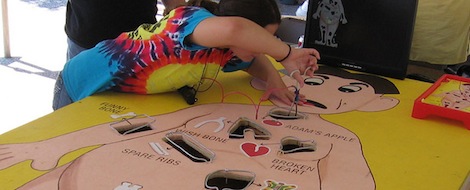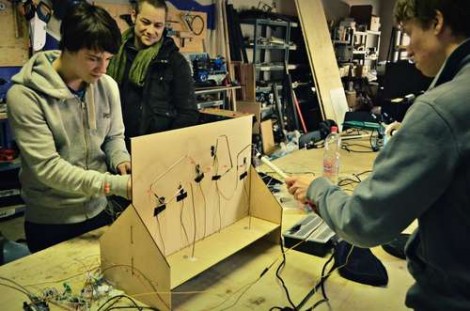It’s hard to beat the warm memories of Hasbro’s Operation, a game that boils down the fine art of surgery to removing farcically named plastic bones and organs. Just in case you can’t conjure up the memory, the game board looks just like this huge version of it, but normally sits flat on the table and is no larger than… well, a board game. Players take turns using a tethered tweezer to remove butterflies from your stomach without touching the metal sides of the incision area. If the tweezers touch the metal, a buzzer goes off and the player loses a turn.
Of course, we now live in the future and robots do our difficult surgeries while the talented doctor looks on from a video console. So, [Ben] and [Jonathan] built themselves an oversized upright version of the game that includes a CNC-wielding surgery robot.
Delightfully, the controls are designed like a coin-op arcade machine and the three-axis CNC machine they’ve built is a new take on the claw machine. It has a gantry that moves left and right, a head that moves up and down along that gantry rail, and an actuator that moves in to snatch those pesky organs. Limit switches cut the power to the motors if the axis moves too far.
In true robosurgery fashion, there’s a webcam that goes along for the ride to give the surgeon a close-up look. Just stay away from those edges! There’s a button on the tip of the actuator that sets off the alarm if you miss the hole and hit the surface of the board, thereby ending your turn. Each organ is made of foam, faced with a piece of sheet metal, and hung from a hook made of coat hanger wire. That sheet metal allows the gripper to use an electromagnet to pick each piece up.
The project is called Sergio and you can see it demonstrated in the video below. We first met these hackers last fall at Maker Faire New York when they were showing off a giant Connect Four game where you play against the computer. It’s nice to hear they’ll be exhibiting Sergio at Philadelphia Maker Faire two weeks from now.
Continue reading “Larger-Than-Life Game Of Operation Is The Future Of Healthcare”






 The folks at the LVL1 hackerspace had the idea of making a life-sized game of Operation. This plan changed when someone at the hackerspace had the great idea of
The folks at the LVL1 hackerspace had the idea of making a life-sized game of Operation. This plan changed when someone at the hackerspace had the great idea of 













